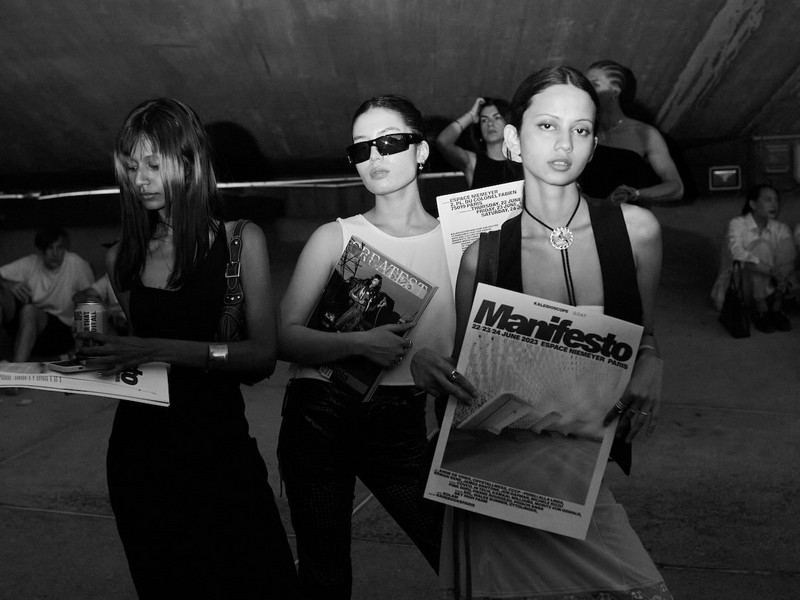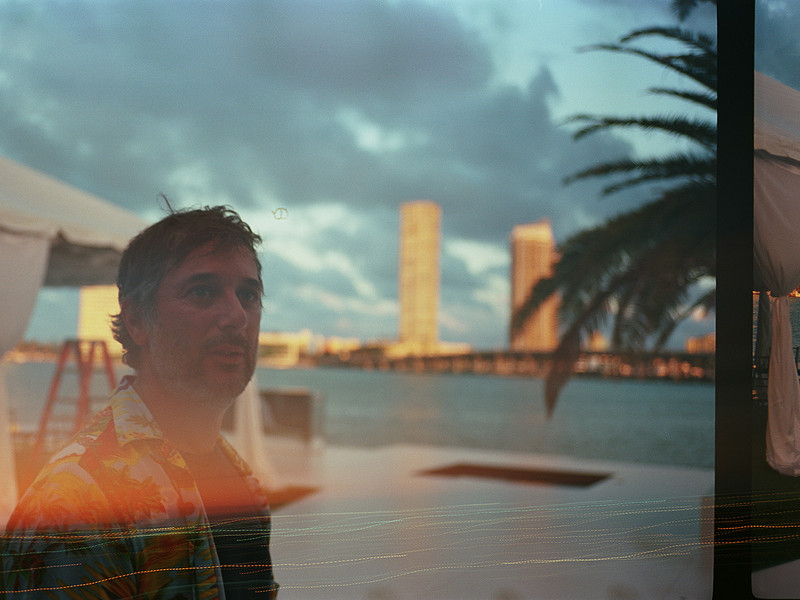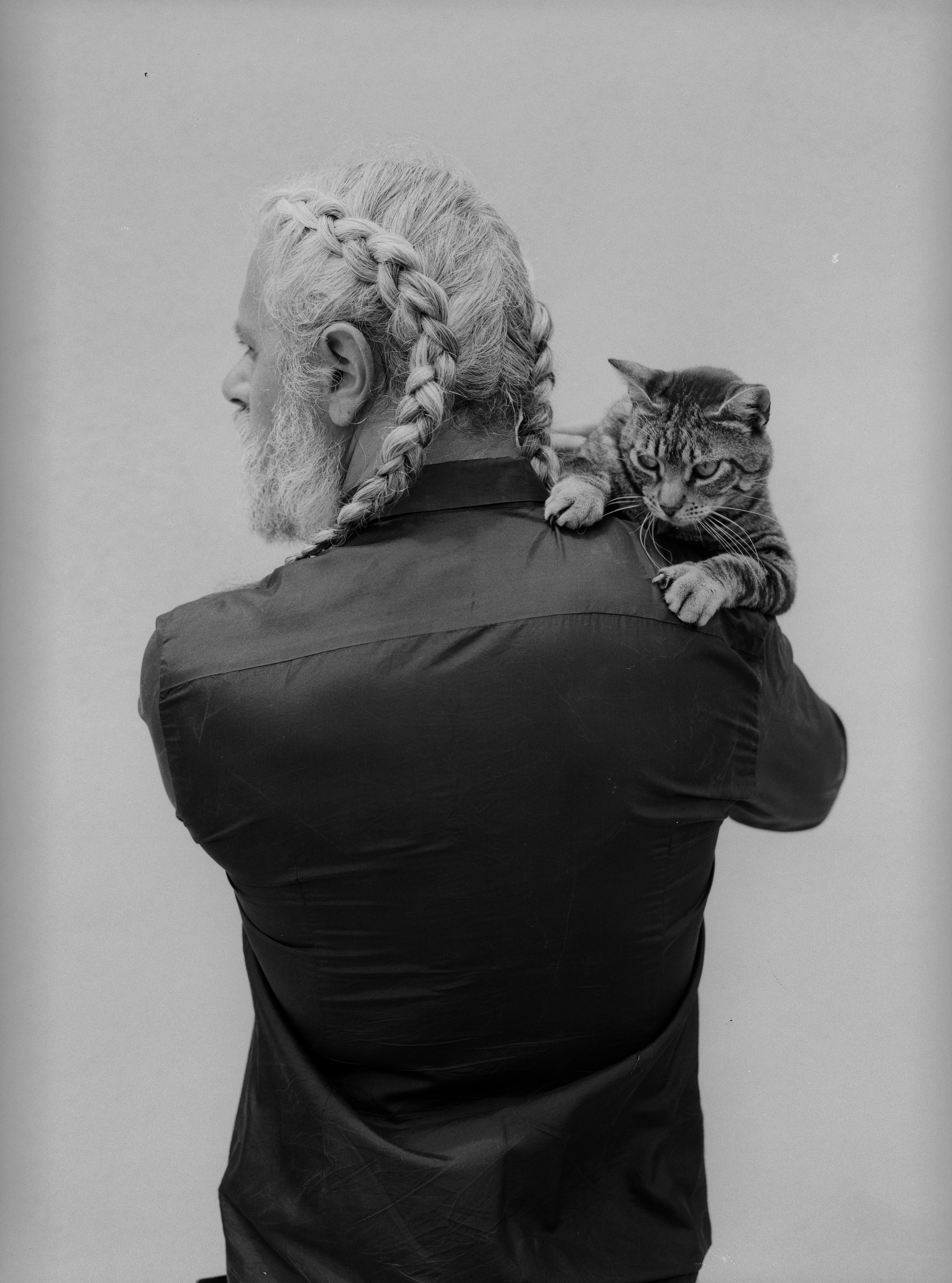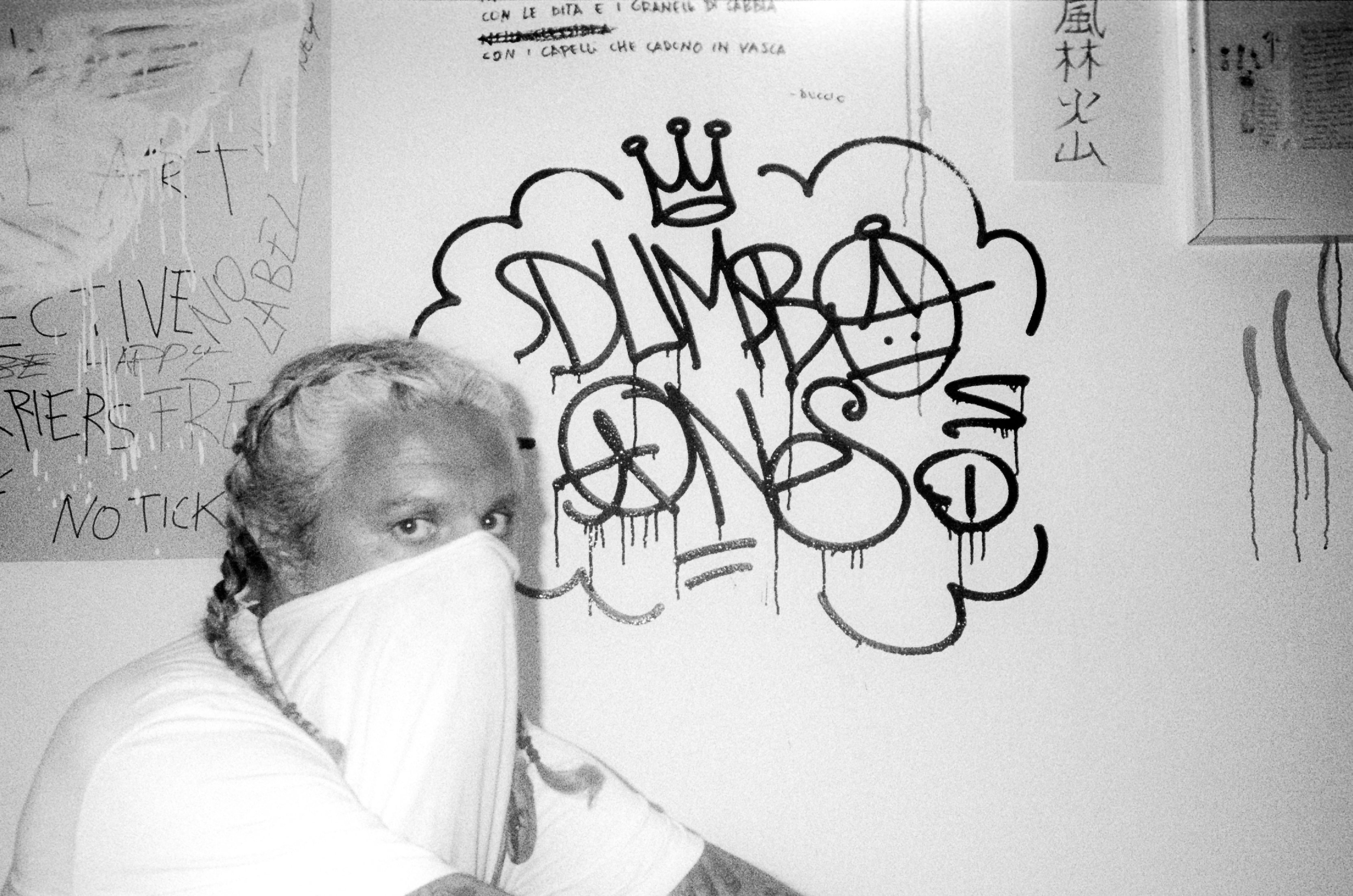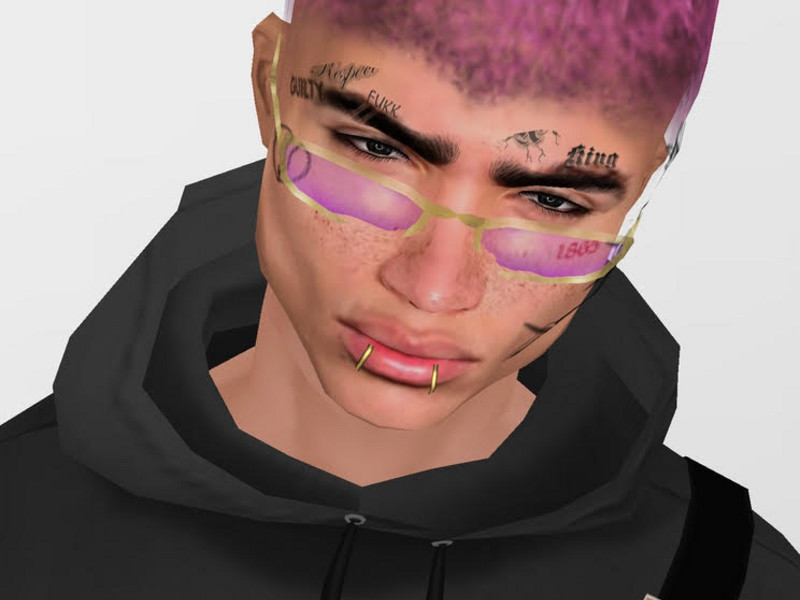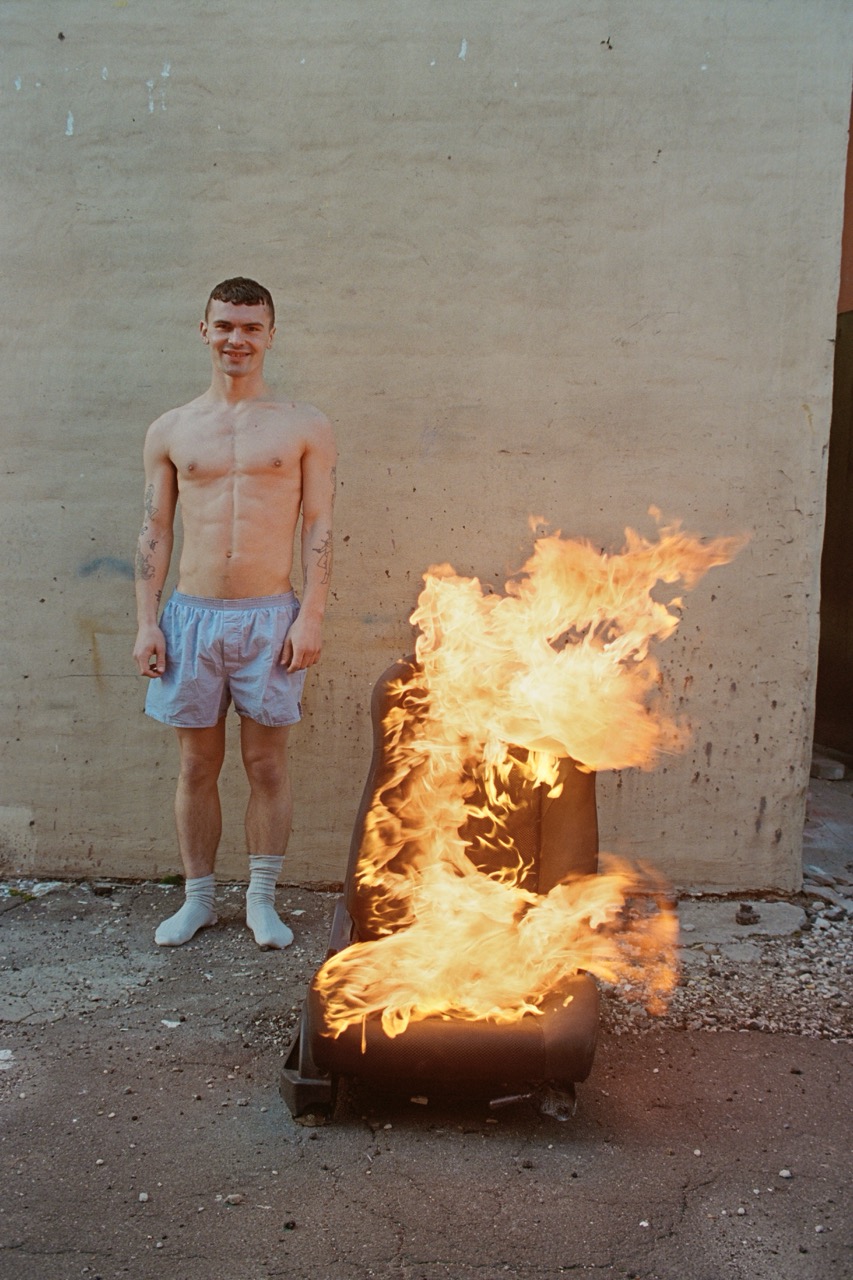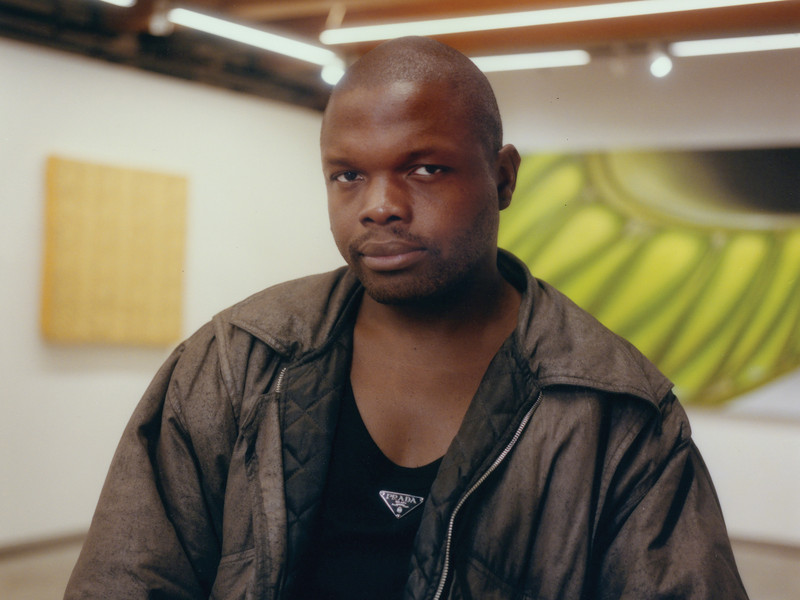Wellness Center

Tell me about the show. It’s in that little house, right?
It’s in the Mike Kelly Mobile Homestead, yeah, which is a replica of Mike Kelly’s childhood home. So I guess that was the starting point, the invitation to do something in that space. I’ve been working on different wellness machines or wellness sculptures, or wellness processes. It seemed like the perfect place to keep going with that idea. So one of the ideas was that this house space reminded me of these converted homes that are used by chiropractors or different wellness practitioners, where on the exterior it’s a house but on the interior it’s not really institutional but it’s a medical office-type space.
Is it an active spa? People can have services done?
All of the work is functional, yes. You can make an appointment—anyone is free to make an appointment to come use it. There are three people at the Homestead who run it, there’s Amy the curator, then there’s Micheal who’s the education director, and Mike the docent—so they’re what you could call the attendants, or they’re the ones who are responsible for guiding people through an appointment. So what an appointment consists of is you would come in and use the sauna shelf, that has cedar from the front yard that are part of the landscaping, and then after you steam in there you would have the choice to take a hot shower outside in the back alley in this shower sculpture and/or have an orange juice from the orange juice collection. And that’s it, that’s what an appointment is.

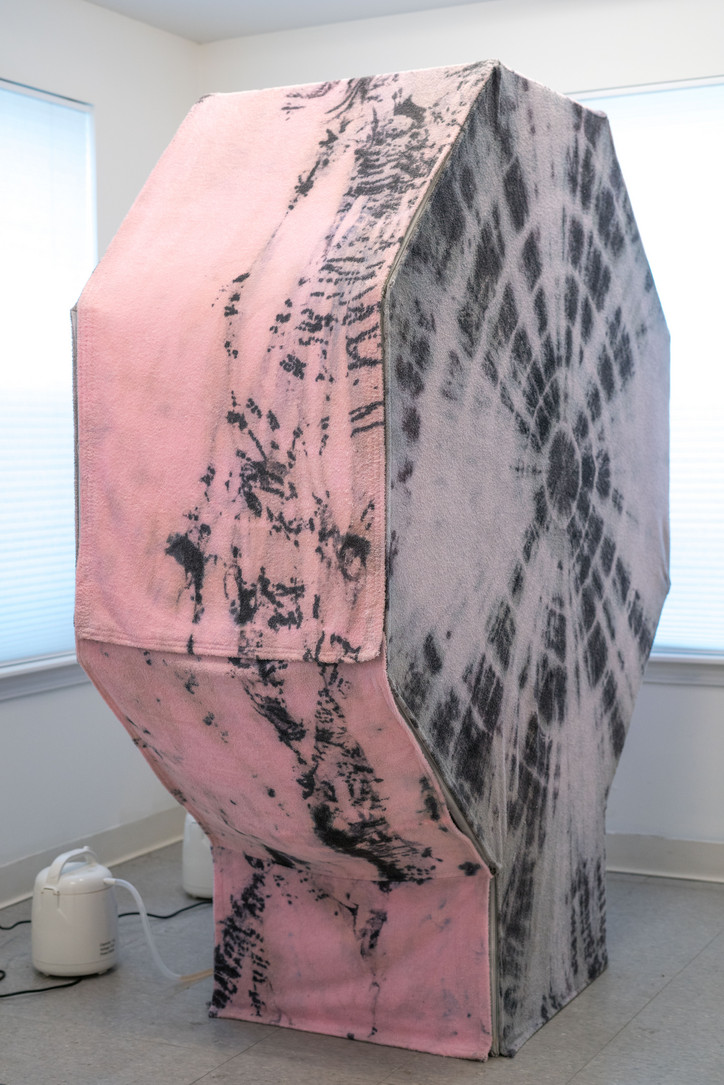
Above: Install views of 'Wellness Center'
The people themselves seem like a big part of the idea.
Yeah, definitely. At the same time, going to a spa or participating in wellness is kind of a private activity, so there’s this tension where I didn’t want to make the appointment a public thing, you know? You can make an appointment outside of the normal hours of the homestead, and it’s not something I necessarily need to document—although I do intend to document a few appointments with the permission of the participants. But it’s a little bit or mythological than something that’s exposed and photographed or something like that. It’s more mythological than performative.
Mythological? Can you talk more about that?
As opposed to people interacting with the work or going through their treatments in a performative way, it’s more like through word-of-mouth, sort of like telling the story. For example, you go use the steam spa, you may have some photographs of that, but it’s more of a private space. So it’s more something that’s transmitted through a myth rather than through documentation.
Where is the interest coming from in regards to wellness? Why wellness?
Everything that I’ve done for the last five or six years has to do with this dichotomy between labor and leisure. For example, a past project was using a swimming pool as a concrete-casting facility to cast sewage pipes out of concrete. Another swimming pool project was using a swimming pool as a soap factory, where large pieces of soap were cast in empty swimming pools. There’s always this question of what does work look like and what does leisure look like, and I feel like wellness is right now at the epicenter of that line. It’s sort of like collective hobby that’s taken over the world to some extent, on different levels. It ties into economics, as well, because it is this tension between labor and leisure, which is kind of the elephant in the room. This felt like an opportunity to do something that wasn’t explicitly luxurious, it’s in the replica of a middle class home, so there’s that kind of thread running through it.
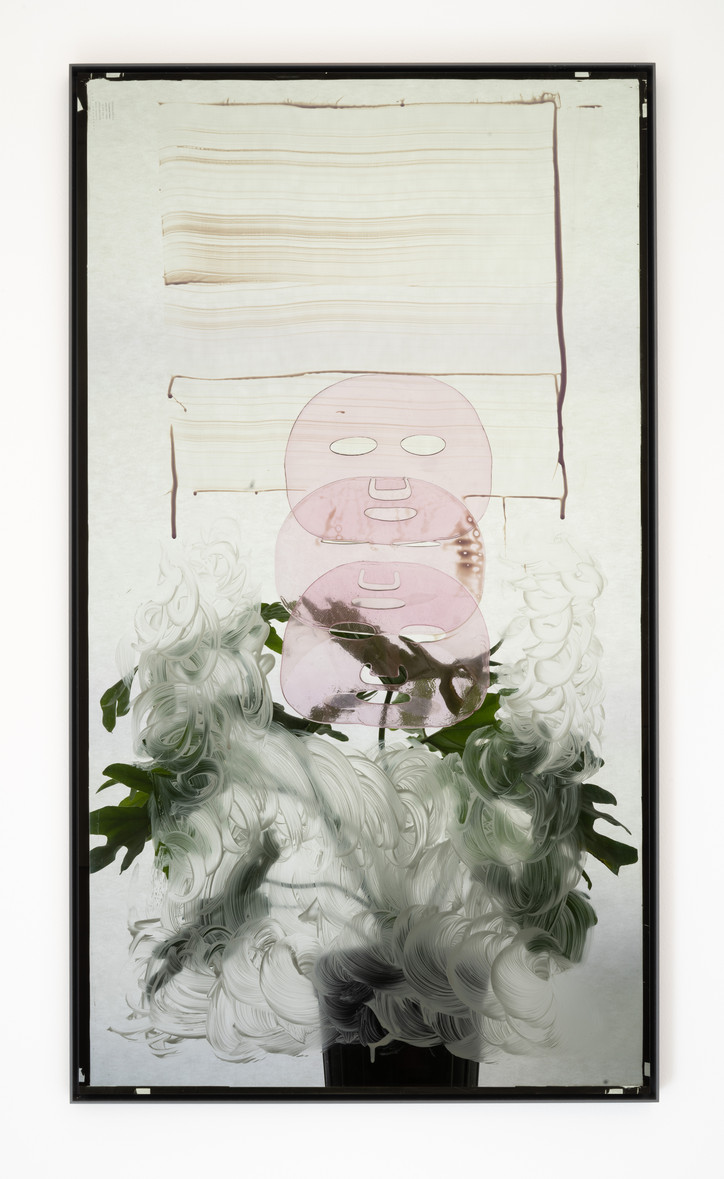

Do people have to pay to use the homestead spa?
No. That’s part of the mandate of the homestead, that the activities that take place there are community-oriented. So I think it was very important that there not be any kind of cost to make an appointment.
It’s interesting too that it’s community driven and yet you’ve turned it into something very private. I love the idea of private vs. public.
That was really important. I think that the space demands that, to be honest. I don’t know how much you know about the space, but there are these tunnels underneath the house, they’re totally off-limits, nobody is allowed down there, just a few of Mike Kelly’s friends are allowed to go down in the tunnels, but no one else is. And what’s cool is it’s totally mythological, it’s not documented, but it’s still something that people talk about, there’s this presence, so there’s this private feeling. The flip side is that the inside of the house is not a domestic interior, it feels like a public school, there’s a water fountain, gray institutional flooring, there are a lot of exit signs and fire alarms everywhere, it doesn’t look on the inside what you expect it to from the outside.
I have actually been there, and now that you say it’s funny because I remember thinking, ‘Is this exit sign or this fire alarm part of the art?’ It’s funny that you picked up on that as well. It’s sold as this domestic space but as soon as you enter it’s extremely obvious that it is not a domestic space whatsoever.
I couldn’t ignore that. It’s not necessarily the most comfortable space. It definitely puts you in a strange mood. I think that the work I put in there and the experience of using the work, it’s not an entirely comfortable experience. There’s something off about the space, and that carries through. I’m still processing it, actually, like what is that off-ness, what does it consist of.


Have you ever been to a spa?
Oh, yeah. This isn’t a very earnest kind of stance, I’m not trying to critique spa culture. I love steaming and I love getting massage, going into a cold pool, all that stuff.
What’s the best spa you’ve ever been to?
Actually, in Detroit there’s this little infrared sauna space, it’s called the Metaphysical Wellness Center, and I had a really good time there when I was doing site visits. They have these infrared saunas and a juice bar and a shower—it’s very modest, and very accessible, like you get a discount if you bring your own robe and slippers. In Miami, we don’t have anything like that, you’re pretty much locked into a $200 spa minimum, there’s no real accessible spa experience here because everything is geared toward the luxurious end.
That word is so interesting, ‘metaphysical.’ I love what you were saying about how wellness exists at the axis of economics and self-help, but it also exists in a spiritual axis as well.
Yeah, totally. The spiritual aspect of it, for me being completely nonreligious as a person—when we talk about wellness or go and participate in wellness practices, I think we want a little lack of definition, or we want a mystery. There’s this idea that we have to treat a trauma that we can’t quite put our finger on. We have to make ourselves well, but it’s just the trauma of living. We’re trying to assuage that somehow. And I think metaphysical questions have to do with the undefined in that way.
'Wellness Center' is on view at MOCAD through August 4th. Lead image: 'Triple Rose Mask Residue Test (Rose water hydrogel, gooseberry hydrator, Cannabis pain creme, double phalaenopsis).' All images courtesy of MOCAD.

